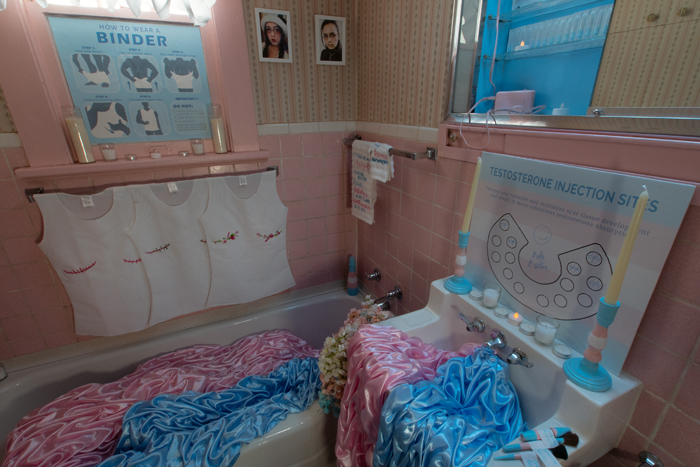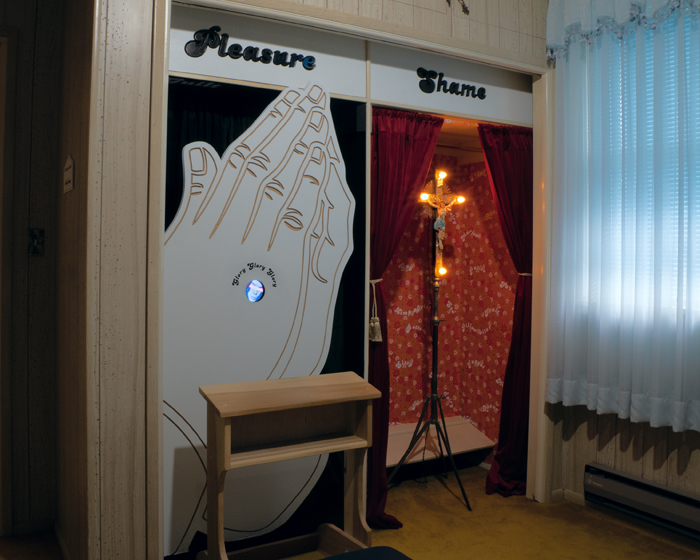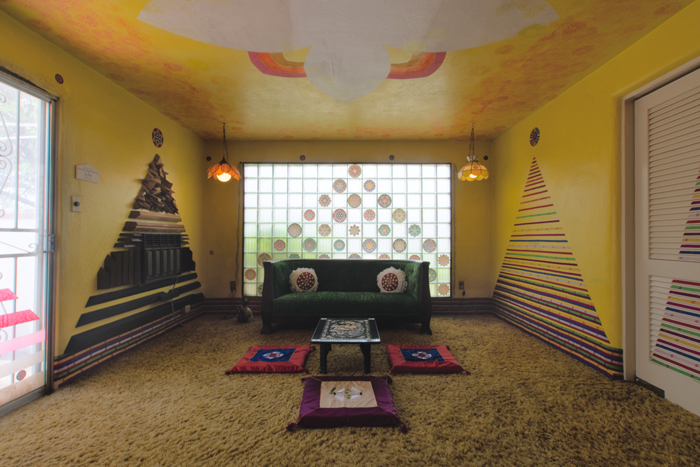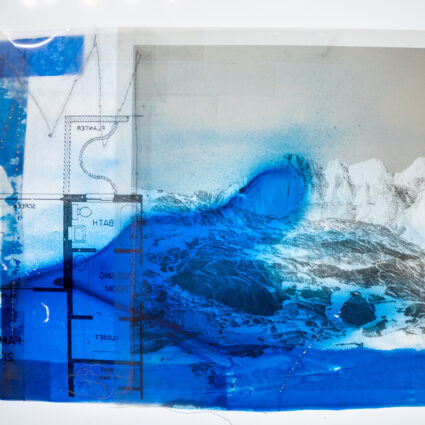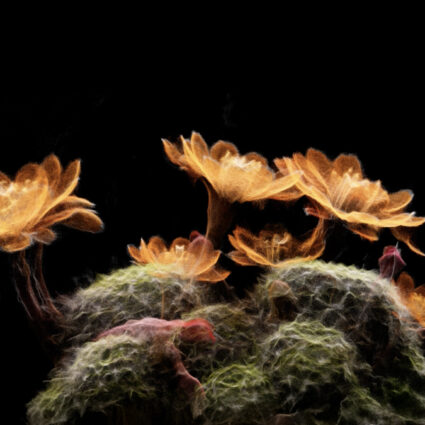Wo/Manhouse 2022 reconsiders the relationship between gender and domestic spaces on the fiftieth anniversary of the seminal feminist installation Womanhouse in Belen, New Mexico.

Wo/Manhouse 2022
June 18–October 10, 2022
Belen, New Mexico
I have no doubt that Wo/Manhouse 2022, an exhibition spearheaded by Judy Chicago on the fiftieth anniversary of the landmark feminist installation Womanhouse (1972), could have been hosted by any number of prestigious, lacquered institutions across the country.
Instead, Wo/Manhouse 2022 took up residence in a rambling, dated house in Belen, New Mexico. Each of the nineteen artists—all based in New Mexico—took over different rooms with installations developed collaboratively with Chicago, artist Nancy Youdelman, and each other: bathrooms, the kitchen, dining room, pantry, and so on. Growing from the roots of its 1972 predecessor, Wo/Manhouse reconsiders and expands on the conception of gender within the sphere of the home. Despite striking recent setbacks, gender consciousness has been raised in the space of the last five decades, and the new Wo/Manhouse comprises artists across the gender spectrum. The project is more powerful and relevant because of this expanded understanding. A lot of women have made work about domesticity, and a lot of so-called “women’s work” has been framed (willingly or not) within its relationship to domesticity, but, as Chicago notes in her introduction to the Wo/Manhouse catalogue, “it is not only women who live in houses.”
The artists explore domesticity, often framed by gender, but expanding to explorations of privacy, coming-of-age, family, and vulnerability. In a bathroom, Vladimir Victor Dantes’s installation Transition (all works 2022) is stocked with the tools of gender transitioning. In a bedroom, Apolo Gomez’s installation Pleasure Closet invites viewers to kneel at a pew and gaze into a glory hole, in which a video plays intimate scenes–framing the position of penitence and illustrating the complex navigation of queer desire. Helen Atkins’s Divinity Bathroom is a sanctuary of blue light, where the viewer can find some solace in privacy—and maybe the divinity within her. The viewing experience of these installations is intimate, like peeking into a friend’s childhood bedroom and glimpsing new depths of their inner lives by witnessing the markers of their traumas, aspirations, struggles, and growth.
Where the domestic space was once colored with 20th-century repressive expectations, these 21st-century artists have repositioned the home as a place of transformation and discovery—pained as it may sometimes be—the first place of intersection between our private identities and the outside world.
